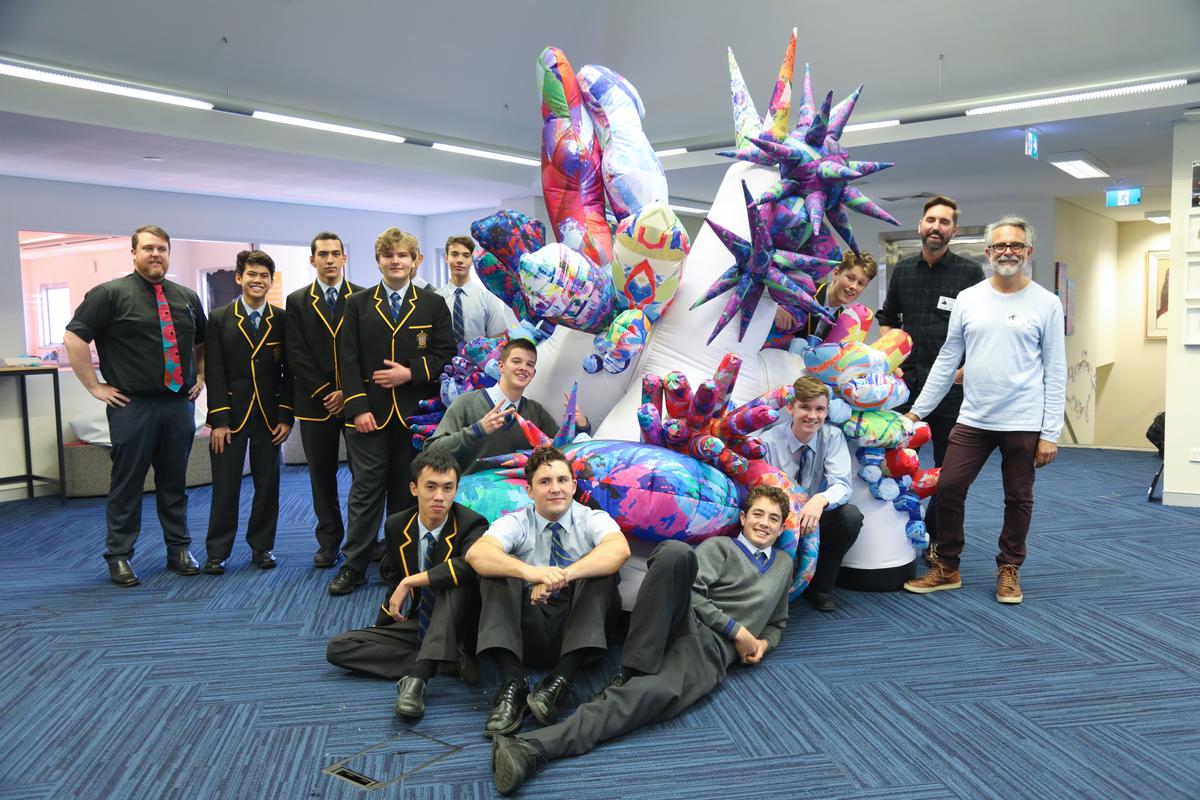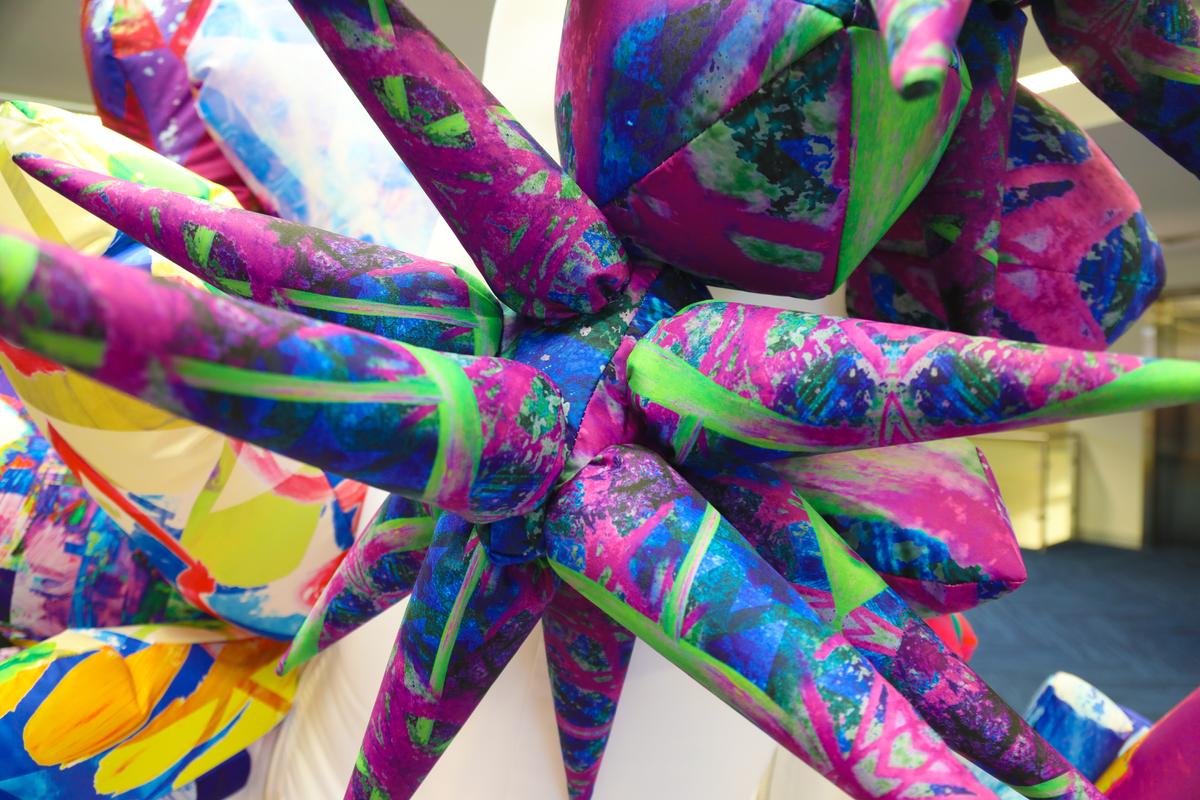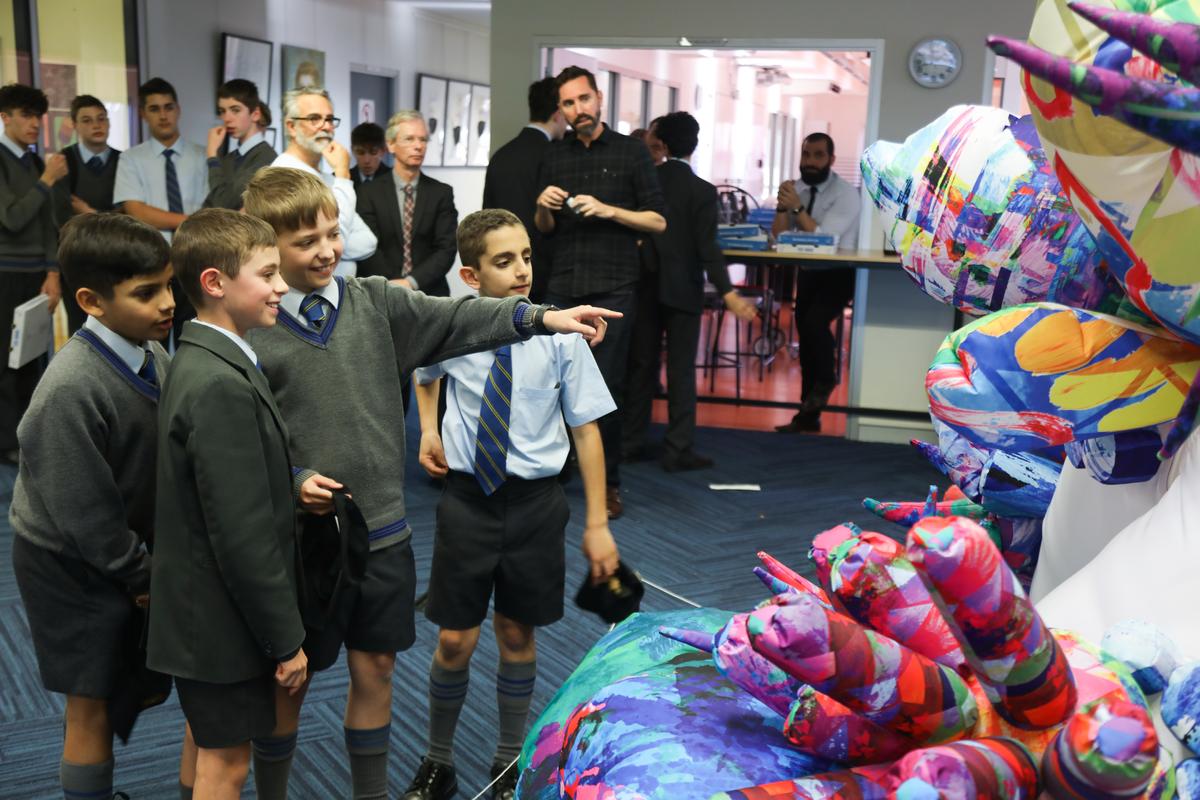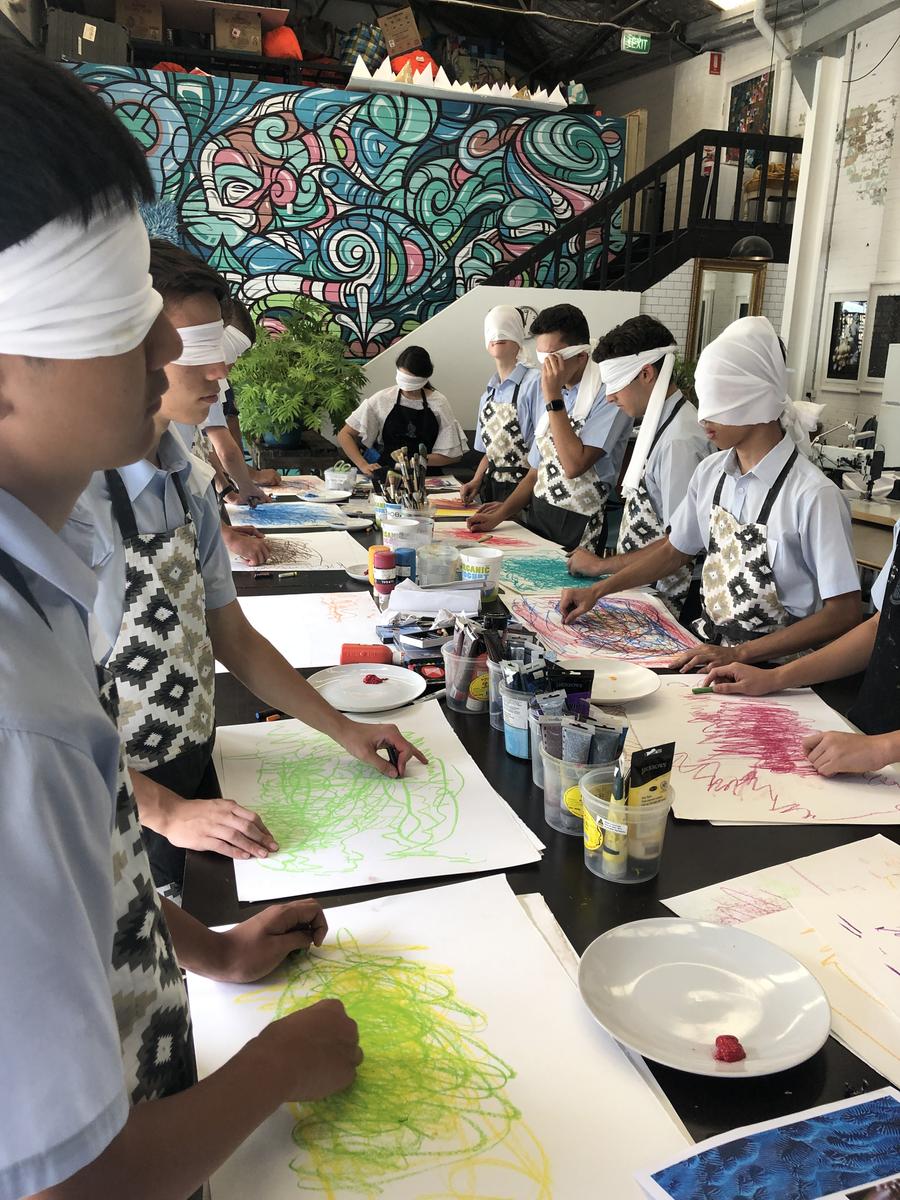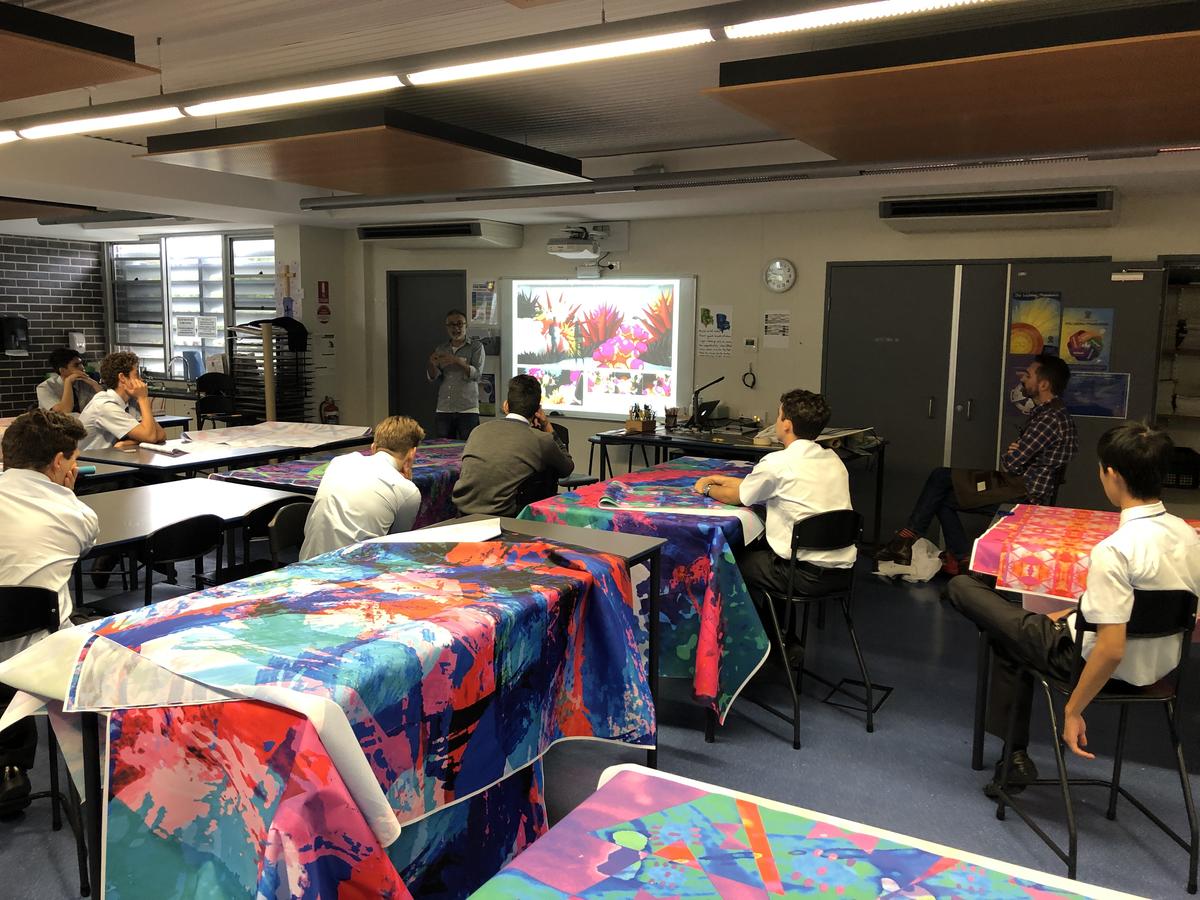Whole School
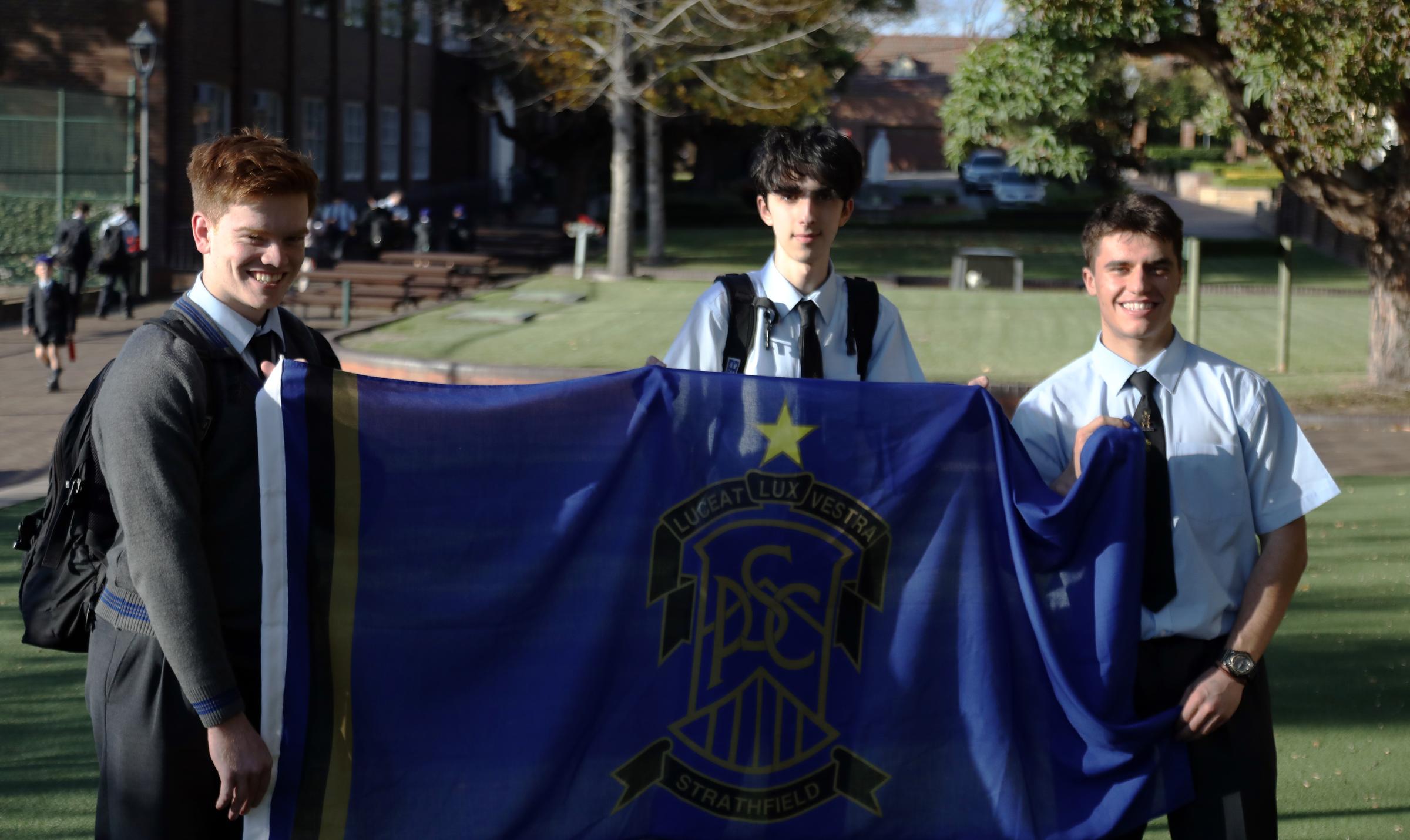
Year 11 Artistic Collaboration
A key facet of Visual Arts learning is the stimulus of another artist’s work. The creative fields have a long history of learning from others (masters), in fact the visual arts industry pioneered the apprenticeship system. Carrying on this tradition at St Patrick’s, the Visual Arts Faculty often identifies avenues for students to engage with professional working artists. This not only builds students’ skills and knowledge but, opens their minds to future directions, opportunities and creative careers available to art professionals.
Across Semester 1, Year 11 Visual Arts students paired with an artist collaborative team to create a large inflatable sculpture. The history of soft sculpture dates to the 1960s Pop Art movement in New York and has been reinvigorated by a range of contemporary artists. To produce a work of the complexity and scale as the one created by our Year 11 students, one needs to understand physicality of space, form, weight, pressure, material density and durability. All higher order concepts addressed by architects, town planners, designers and engineers every day.
Tuesday, 16 June saw the work installed and inflated for the first time at the College. To mark the occasion, students held a small art opening with a Pizza lunch. Dr Wattam attended and presented the collaborating artists with a beautiful gift of thanks. The inflatable will remain in the Mary MacKillop Art Centre, but has the potential to be installed around the College environment.
Nick Phillipson
Visual Arts Studies Coordinator
Visual Arts Student Apprentice
Over the course of Terms 1 and 2, the Year 11 Visual Arts class had the pleasure in collaborating with local Sydney-based commercial artists of GAS studio, Maurice Goldberg and Matthew Aberline, to produce an immersive and visually stimulating art installation for the open space of the Mary MacKillop Art Centre. With this unique opportunity in collaborating with these artists, we were given a great insight into the scope of their unique contemporary artmaking process, in which we ourselves can employ or at least be inspired by for the creation of our own HSC Body of Work.
Maurice and Matthew’s initial visit introduced us to their commercial artmaking practice; they produce large soft inflatable sculptures. Both artists bring unique skills to their practice that complement the other, Maurice’s project and financial management skills work in unison with Matthew’s background in fashion and costume design. Throughout numerous meetings with the artists both in studio and at the College, we established an idea for our collaboration. We decided to explore seabeds, coral structures, patterns, and colours, and the issue of coral bleaching.
Following this, we were lucky enough to be given the opportunity to visit GAS studio, which entailed a full-day artmaking workshop to work actively in the development of the installation, while also furthering our understanding of contemporary artists' practice. During this day, a predominant portion of time was taken by giving us the chance to experiment with various media, by conducting in art exercises, where our sense of sight was taken away to remove any of our inhibitions and natural prejudice, producing rhythmic art stimulated with various genres of music.
With the works produced during the studio visit; we had drawn out certain patterns and components, and digitised them to be used as components, employing Photoshop to overlay components and manipulate their colour, contrast, shape, and size to form our final patterns. In this manner, we had learnt many new skills in terms of digital art in the process, using them to create distinguished patterns reflecting the notion of a coral reef based on our original stimulus and further reference materials.
The final patterns that had been produced within Photoshop were printed onto large sheets of environmentally sustainable material, where in another visit to the College, Maurice and Matthew had outlined the engineering and practicality behind certain shapes, methods of stitching, and the material used to create an architecturally sound structure for the final installation. These concerns had determined the shapes that we had cut out from our fabric. However, unfortunately due to the COVID-19 pandemic, we were unable to visit the studio again and engage in the sewing of the fabric to form the structure of the artwork. However, to compensate, the stage of this process was detailed by the artists in producing the final work that had incorporated all our designs and ideas.
Overall, this experience had not only resulted in the production of an immersive and cohesive art installation, in which the viewer engages with the work in a sense of wonderment, but had also given us, as a class, a deeper understanding of the artmaking process in which we can undertake the mindset to take artistic risks and use our own creative liberty of experimentation with various media, for our future body of works.
Lawrence Young
Year 11 Visual Arts Student

